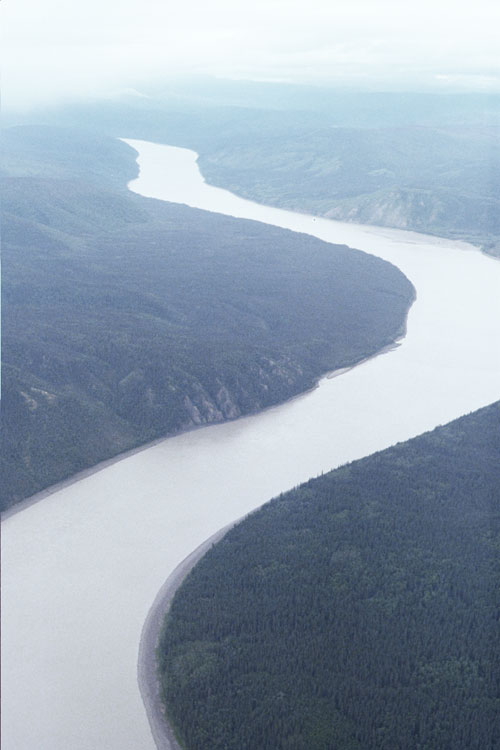The Yukon-Koyukuk Region
| Introduction | Geology | Hollick Localities | Spicer Localities | Locality Relationships | Wider Correlations |
|---|
IntroductionThe plant fossils contained within the sandstones and shales exposed along the north and west banks of the Yukon River between the Melozitna River and Kaltag are of critical importance to the understanding of the Cretaceous vegetation of Alaska. They represent one of the first comprehensively described angiosperm-rich floras from this region and have been a source of reference for the fossil floras of NE Russia. In spite of the attention afforded them the most recent analysis of the assemblages remains that of Hollick (1930) whose handling of the systematics of both the conifers and angiosperms has been described as " *** confused and inadequate *** " (Chaney, 1951). Since Hollick's (1930) work there has been some controversy concerning the age of the deposits. Hollick considered all the fossils from this region to be of Cenomanian age but this was called into doubt when Albian molluscs were reported from the Nulato Formation which supposedly overlies some of the plant-bearing beds (Patton and Bickel, 1956; Patton, 1973). Although Bell (1963) concluded that all of the plant-yielding rocks were of Cenomanian age there have been continuing doubts that all of Hollick's specimens were recovered from the same stratigraphic level (Scott and Smiley, 1979). As long ago as 1904 Schrader used lists of plants from the Lower Yukon River Cretaceous succession in a discussion of the correlation of the Arctic Slope Nanushuk "series", now called the Nanushuk Formation, and recent studies of the Arctic Slope Cretaceous plant megafossil assemblages have revealed a number of forms common to both areas. Furthermore many of the forms recovered from Cretaceous deposits in Eastern Russia have been referred to species that Hollick described from the Yukon-Koyukuk Province. A reappraisal of the forms found at the localities reported by Hollick is long been overdue and comparison with leaf forms in Northeastern Russia is a step in this process. In the 1970s RAS revisited Hollick's localities. The importance of this flora and its environmental signal has recently increased by the discovery of dinosaur trackways distributed throughout several thousand meters of delta floodplain sediments exposed along 200 kilometers of river cut exposures. The tracks have been assigned to ornithopods, ankylosaurians, small to medium sized tridactyl theropods, an unusual tetradactyl form and sauropods (Druckenmiller et al., 2014). In this catalogue we reproduce Hollick's 1930 treatment of the Yukon-Koyukuk fossils in electronic form using our photographs of his specimens now housed at the US National Museum, Washington D.C.. |
 |
|
| Aerial photograph of the Yukon River. |
